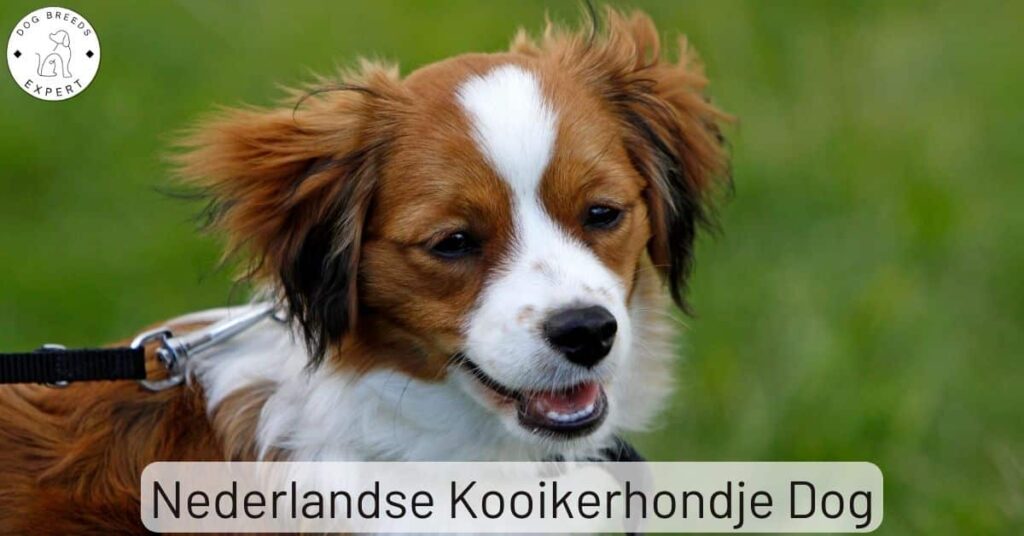Discover the amiable, friendly and agile Nederlandse Kooikerhondje
The Kooikerhundje is a small dog to medium size working dog breed originating in the Netherlands. They are very friendly and good-natured, while being athletic and agile. They were originally used to lure ducks. This is a relatively rare breed in the United States, but is increasing in popularity. The Dutch Kooikerhondje club was organized in 1967, and the breed was officially recognized by the Raad van Beheer (the Dutch Kennel Club) in 1971.
It was recognized in North America by the American Kennel Club in 2018 in the Sporting Dog Breeds group. In the United Kingdom, the Kennel Club reclassified the Kooikerhondje from gun dog to Unility dog in 2014.
The breed name is pronounced COY-ker-HUND-che in English.

Nederlandse Kooikerhondje – Temperament
This is a cheerful and good-natured breed. They are alert without being excitable, and generally well-behaved. These are intelligent dogs, and are moderately difficult to train. They make a great family companion. While they may be a little apprehensive of strangers at first, they will accept a new person quickly, and then treat them as old friends.
They were never bred to be gun dogs, and so can be startled by loud noises or sudden movements. They are also easily intimidated by boisterous children, but are unlikely to snap. They are not known for aggressive behavior .
The Kooikerhondje can tolerate apartment life as long as they get daily exercise, but they probably do better in a house with a backyard. They have a moderate energy level.

Nederlandse Kooikerhondje – Breed History
This is a very old dutch breed, visible in paintings by some Dutch artists from the late Middle Ages. The breed was used to lure ducks in manmade duck-trapping pond systems. The dogs were referred to as the Duck Decoy Dog.
The breed has been associated with the founder of the Dutch Monarchy, Prince Delft, whose dog Kuntz was credited with saving the Prince’s life in 1872 by waking up up to alert him of an assassination attempt.
The popularity of the breed began to wane after the First World War, as reliable hunting guns meant that hunters could simply shoot the ducks. The Duck Decoy pond systems were not as profitable as they used to be, and the effort to maintain thembecame less attractive over time. With the disappearance of the duck decoy pond systems came the decline in the decoy dogs used to lure the ducks.
In late 1939, at the start of the Second World War, the Baroness van Hardenbroek van Ammerstol started a program to try to save the breed. She sent traveling salesmen who stopped at her estate away with a photograph of the breed and a piece of fur.
When they saw a dog that seemed to match the Baroness’s requirements, she visited the dog. In this way she aquired around 30 dogs, including Tommy, a bitch from the farthest north province in the Netherlands. The Baroness bred 52 litters under the name Walhalla from 1942 to 1976.
There is some evidence that the Nedelandse Kooikerhondje was involved in the development of the Nova Scotia Duck Tolling Retriever.
Ease of Training
The Nederlandse Kooikerhonde is not straightforward to train. There are intelligent dogs, and they are keen to please their owners, but also have a mind of their own. As with all dogs, several training sessions of short duration each day work better than a long session repeated every 3 days. Correct behaviour should be rewarded, and incorrect behaviour ignored – positive reinforcement.
We recommend taking your Kooikerhondje to puppy training classes as soon as your vet says it’s safe. This introduces the dog to the concept of training, learning something new to get rewards for, and it’s also the start of early socialization. This introduces the young dog to new sights, sounds, smells, new people and other dogs.
Vital statistics for an adult Kooikerhondje;
Height; 15 to 16 inches
Weight; 20 lbs to 30 lbs
Lifespan; 12 to 15 years.
Colors;
The breed has a red-orange and white coat, with black tips on the ears and a feathery tail.

Nederlandse Kooikerhondje – Grooming
The kooiker is a moderate shedder, and needs a good weekly brushing with a pin brush. They have a double layer coat like all water dogs, and the top coat is wavy and feathered. They do not develop a ‘doggy’ smell, and only need an occasional bath.
The nails tend to grown quite quickly, and should be checked every week. If they are getting long, they should be gently trimmed to prevent splitting and cracking.
Protection
The Nederlandse Kooikerhondje breed are very good watchdogs. They are alert, and quickly sense if something out of the ordinary is happening around the house. Then they will promptly bark to alert their owners.
When it comes to action, however, this breed is unlikely to do much more than bark. They are small in size, and rather easily intimidated by a determined intruder.
Health Problems Health Issues
Health problems
The Kooikerhonje is an essentially healthy breed, but they do tend to suffer from a number of genetic disorders due to a relatively small gene pool. The disorders include the following;
- Willebrand”s Disease, a blood clotting disorder.
- Cataracts and other eye diseases
- Patellar luxation.
- Hereditary Necrotising Myelopathy (ENM), a fatal neurologic disease that can be identified by a DNA test.
- Polymyositis
- Epilepsy, a central nervous system disorder.
- Kidney disorders
A reputable breeder will have his stock regularly tested for genetic problems as part of his breeding program.
Nederlandse Kooikerhondje – Famous Dogs
A Nederlandse Kooikerhondje is portrayed in the painting The Happy House Companion by Jan Steen.



